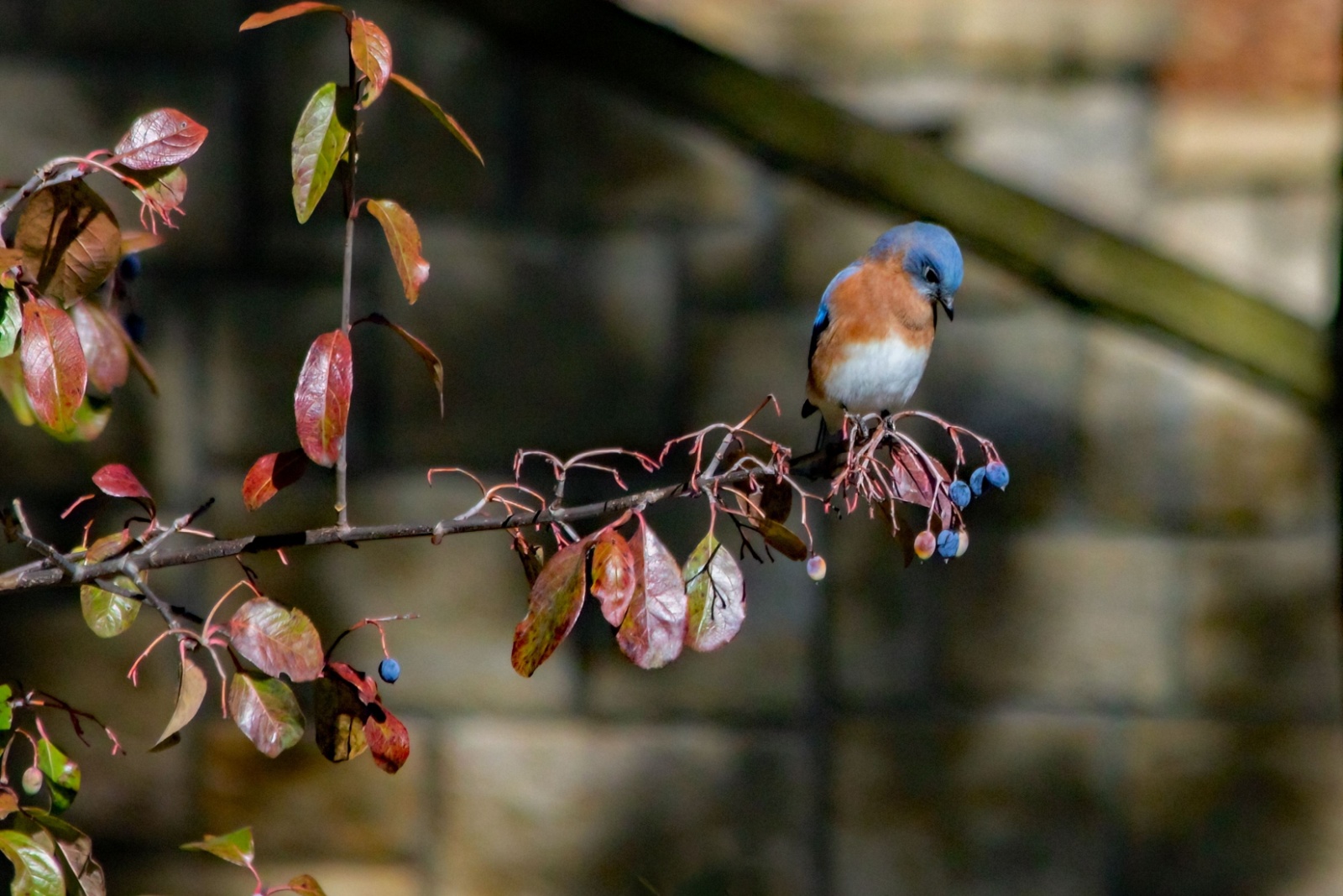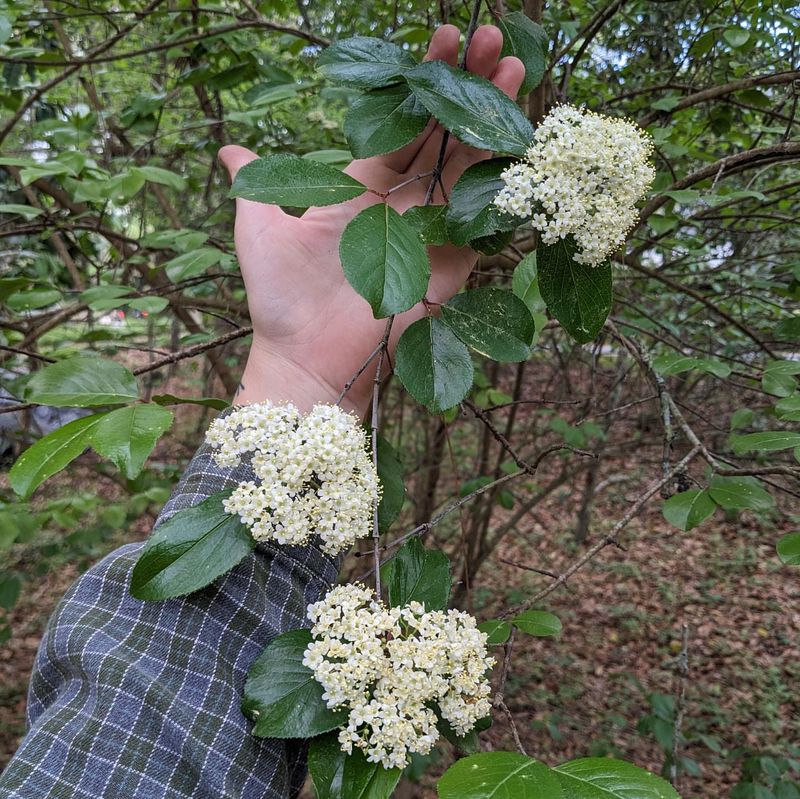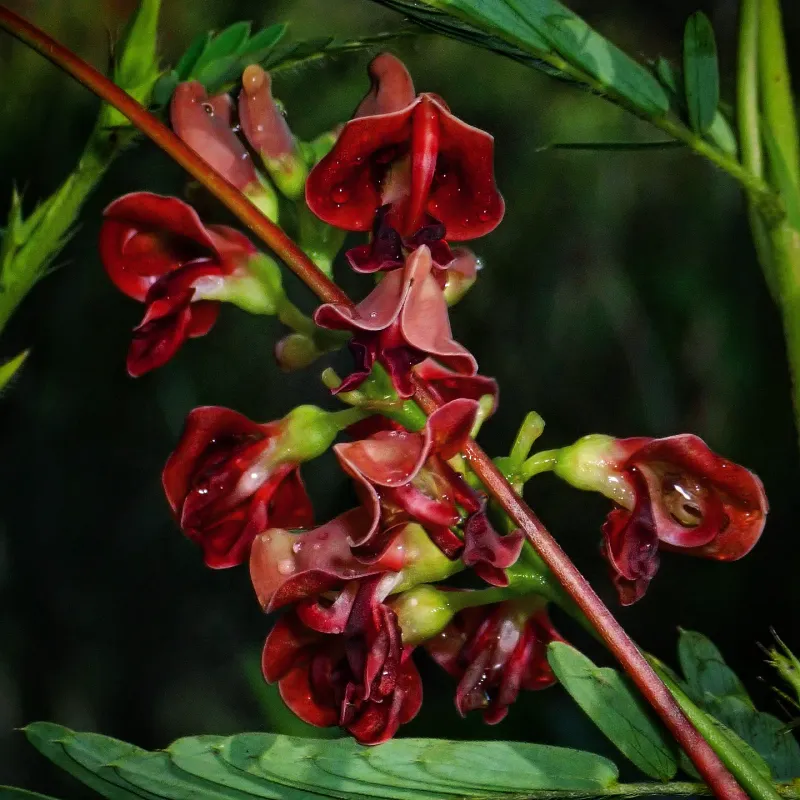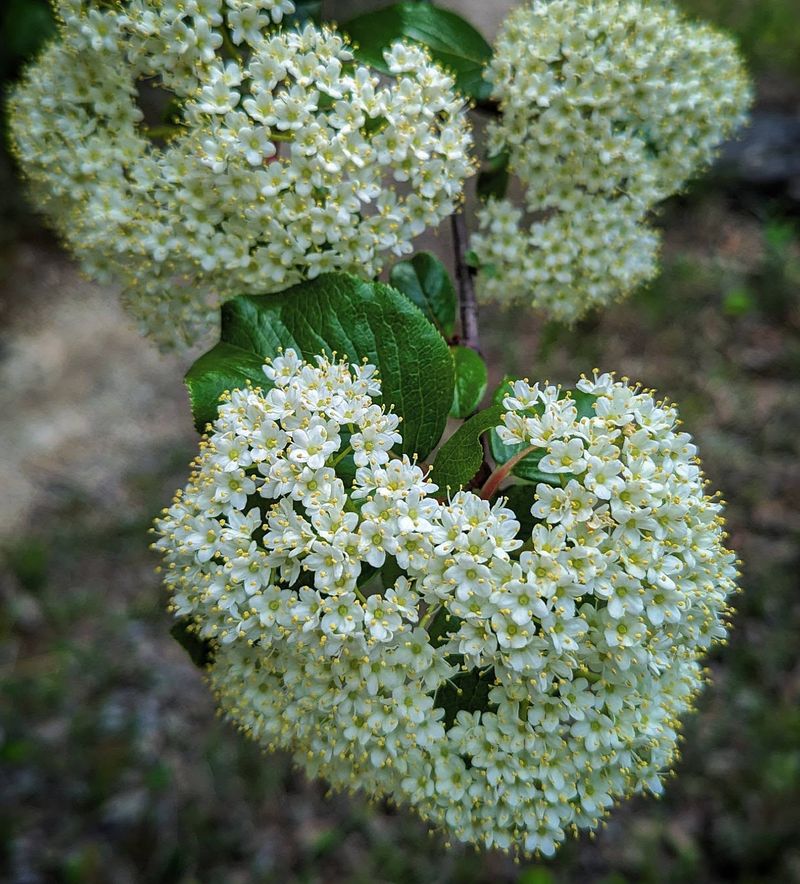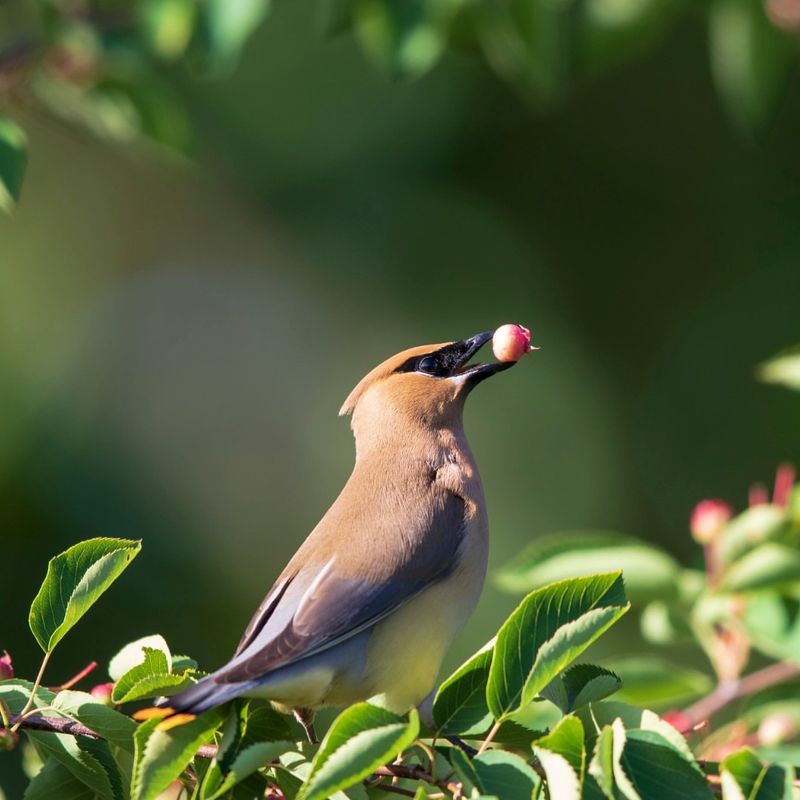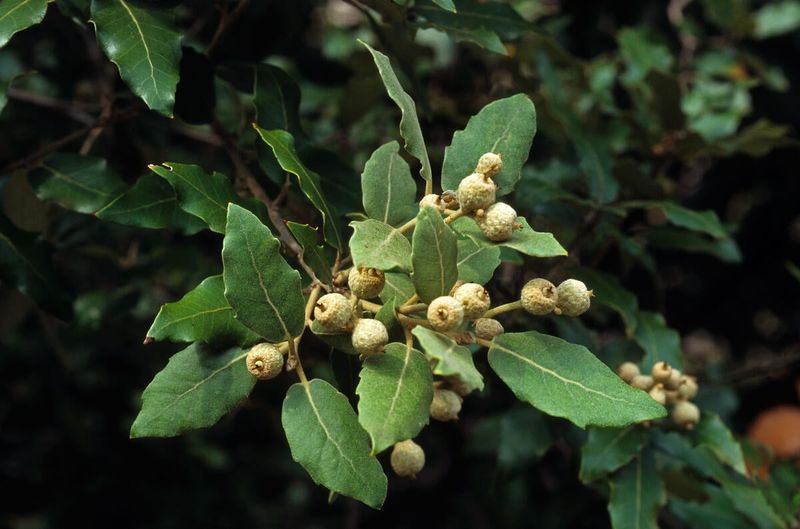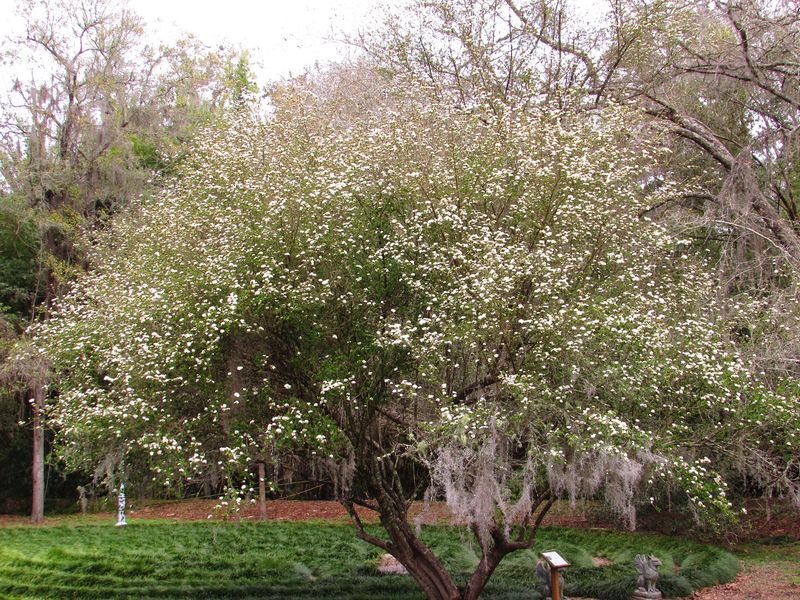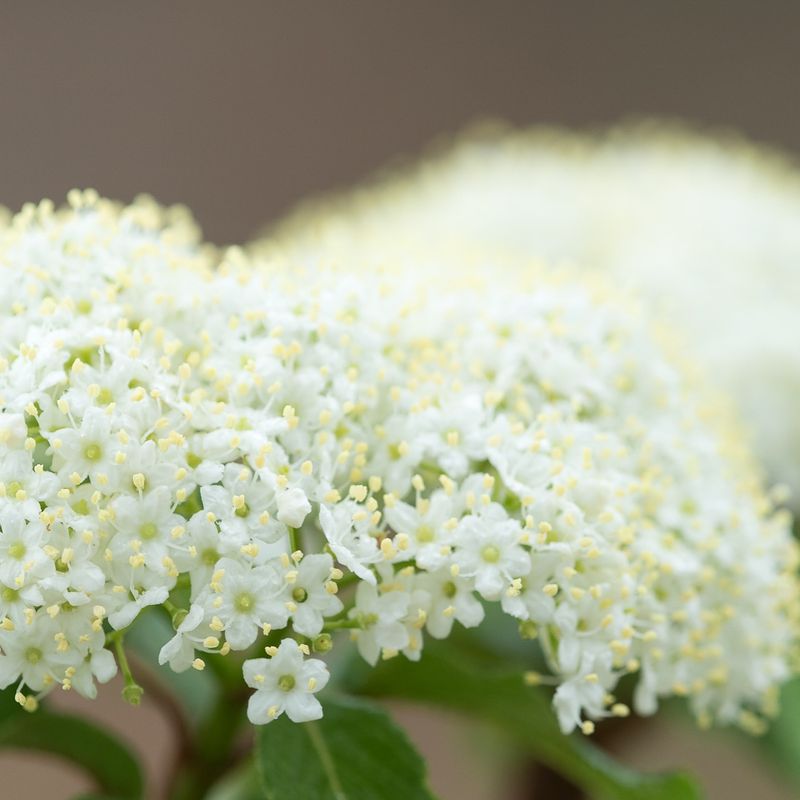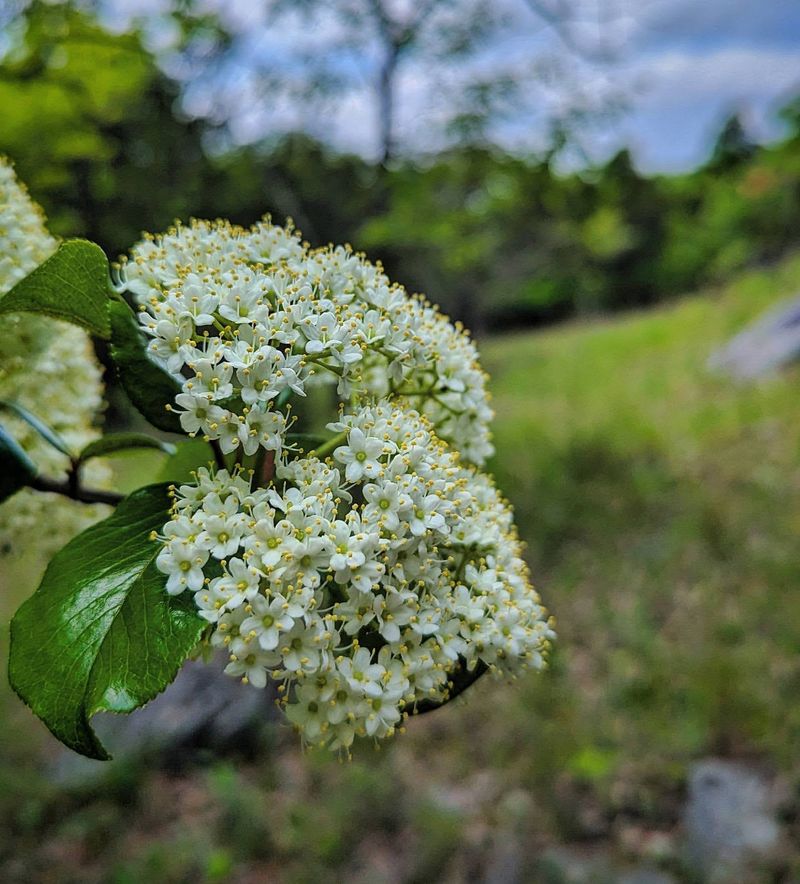When fall sweeps across Texas, one tree turns into the hottest hangout in town, buzzing and fluttering with life as bees, butterflies, and birds line up for a feast. It’s proof that not all the action happens in spring — some trees save their best show for autumn.
Leading the charge is the Rusty Blackhaw, a native beauty that becomes a true pollinator magnet every fall.
1. Native Beauty With Many Names
Known scientifically as Viburnum rufidulum, the Rusty Blackhaw goes by several nicknames including Southern Blackhaw and Southern Nannyberry. The “rusty” in its name comes from the reddish-brown hairs covering the leaf buds and young twigs.
Native Americans valued this tree for medicinal purposes, using its bark to treat various ailments. Today, landscapers prize it for its four-season appeal and ability to thrive in Texas’s challenging climate.
2. Fall’s Colorful Transformation
Come autumn, Rusty Blackhaw leaves put on a spectacular color show ranging from deep burgundy to bright scarlet and rich purple. Unlike many trees that display just one fall color, each leaf often showcases multiple hues simultaneously.
This color transformation typically begins in late October in Texas and can last several weeks. The vibrant display makes it a standout feature in parks and gardens when many other native plants have faded.
3. Pollinator Paradise In Spring
Spring brings clusters of creamy white flowers that cover the Rusty Blackhaw like a blanket of snow. These flat-topped flower clusters (called corymbs) can measure up to 4 inches across and emit a sweet fragrance that pollinators simply can’t resist.
Bees buzz frantically around blooming Blackhaws, while butterflies linger on the flower clusters. A single mature tree can support thousands of pollinator visits during its blooming period, making it an ecological powerhouse.
4. Berry Buffet For Wildlife
After flowering, Rusty Blackhaw produces bluish-black berries that ripen in late summer and fall. Birds go crazy for these fruits! Cedar waxwings, mockingbirds, and robins feast on the nutritious berries, which hang in decorative clusters.
The fruits start green, turn pink, then ripen to a deep blue-black with a waxy coating. Many Texas wildlife species depend on these berries as an important food source during migration or winter months when other food becomes scarce.
5. Drought-Tough Texas Survivor
Mother Nature designed the Rusty Blackhaw to handle Texas weather extremes. With its deep root system and efficient water usage, this tree thrives even during prolonged dry spells that would stress or kill other species.
Once established, it rarely needs supplemental watering except in extreme drought. This resilience made it valuable to early Texas settlers who noted its ability to remain lush when other vegetation withered during the state’s notorious summer heat waves.
6. Understory Champion Of Texas Woodlands
Rusty Blackhaw naturally grows as an understory tree beneath taller oaks and pines in Texas woodlands. Reaching heights of 18-25 feet with a similar spread, it fits perfectly into that middle layer of forest ecosystems.
This medium size makes it perfect for modern yards where space might be limited. Growing happily in partial shade or dappled sunlight, Rusty Blackhaw creates its own microhabitat, providing shelter for birds and small mammals beneath its dense canopy.
7. Historical Significance To Texans
Early Texas settlers recognized the value of Rusty Blackhaw long before modern gardeners rediscovered it. They used its hard, dense wood for tool handles and small items requiring durability.
The bark contains compounds similar to aspirin and was brewed into tea to treat fever and cramps. Old Texas homesteads often featured these trees near houses, both for medicinal purposes and because the spring flowers and fall berries provided reliable seasonal markers for planting and harvesting.
8. Easy Care For Texas Gardeners
Gardeners love Rusty Blackhaw because it’s practically maintenance-free once established. It rarely suffers from pest problems or diseases that plague many ornamental trees. The naturally rounded shape requires little to no pruning to maintain its attractive form.
Plant it in well-drained soil with morning sun and afternoon shade for best results. Young trees benefit from mulch to retain moisture, but mature specimens can handle typical Texas growing conditions with minimal intervention, making it perfect for busy homeowners.

